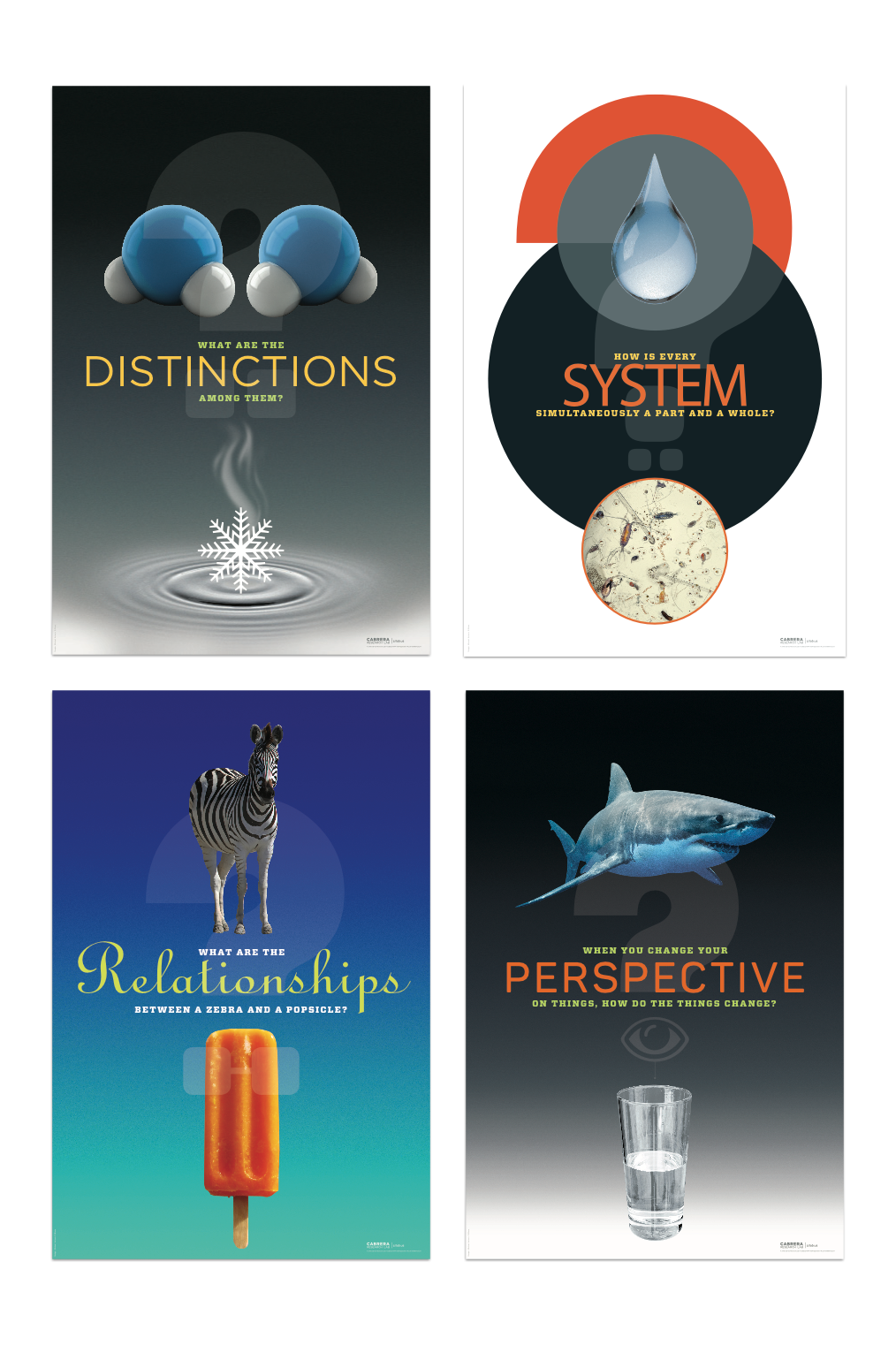Synapses, Hinges, Embassies, and Supply Chains: The Power of RDS Structural Predictions
I want to introduce you to some ideas that may seem philosophical and abstract, perhaps academic. I hope that, in the end, these ideas will lead you to insights thatare extremely pragmatic and useful.
It is a popular belief that the entirety of our experience is a figment of our minds. That nothing is real. In epistemology—the study of how we know—this is called by many names (with various degrees of extremity) such as: solipsism, relativism, idealism, subjectivism, etc. An alternative epistemological view—that presupposes a "real world" exists independent of our mental state—goes by different names such as: materialism, realism, objectivism, etc. If we were to eschew binary dichotomies as false and attempt to combine two of these ideas we'd get something like: cognitive-materialism, the conclusion that while there is a real world "out there" it is equally possible that our mental models influence how we see it.
These philosophical questions and considerations are long-standing and long-winded. But they attempt to answer important questions like: what is the nature of reality (also called ontology)? What is the nature of the mind? And how do the mind and nature interact? Although inadvisable in philosophy, for the purpose of this relatively short blog, I will cut to the chase.
The human mind doesn't always get reality right, but it also doesn't always get it wrong. Because the mind evolved within reality and its laws, there is similarity between how nature and the mind are structured, which increases the probability of a correspondence between them.
This structural similarity between reality and our mental models of reality is captured by DSRP (Distinctions, Systems, Relationships, Perspectives). It is therefore the case that DSRP structures can be used to make structural predictions about the mind and nature.
I've written about structural predictions before (here) and the RDS jig (here). In this post I explore a few examples of a particular set of structural predictions (based on DSRP structure), called RDS or "distinct, relational systems."
Let's take a look at four different systems: Synapses, hinges, embassies, and supply chains.
Neurons are nervous system cells. Through their interaction, they transfer information to and from other nerve, muscle, or gland cells. Neurons are comprised of a number of parts such as the cell body, axon, and dendrites. The axon has many small branches that end at terminals that allow the cell to send information. Dendrites receive information from other neurons. Synapses are contact points where one neuron (axon) communicates with another neuron (dendrite).
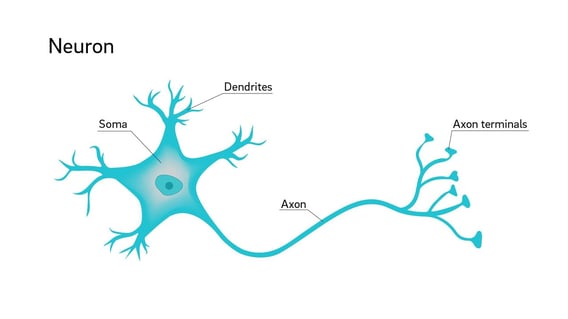
Note a few things here. These material things and relationships we call neurons create our thoughts and mental models. So, mental models are not merely conceptual, they are also material, real-world phenomena, with real-world effects on the individual and writ large. Second, note that the relationship (R) is called the synapse (D). So, a synapse is already an R and a D or what we call an "RD" or "barbell." We call this particular type of relationship a relationship-distinction. Note also that the synapse is not merely a distinct thing but a composite of things, or a system (S). Let's see how that is the case...
You might look the the image of neurons below and say, "that's a network of neurons!" Or, "those are neurons interacting with each other." You'd be right. But what we are saying structurally is that there's a "bunch of things relating."

If we zoom into the synaptic cleft of any one of those relationships, we see a lot of complexity going on. Indeed, the "interaction" you previously recognized is in actuality a complex system of interactions between cells which you can see in the image below. What this illustrates is that the relationship (R) between two neurons is a distinction (D) called a synapse which is a complex system (S) with many parts. A synapse is an RDS.

Or learn more about this synaptic RDS in this video:
Let's take a look at another physical system: a doorway. A door is related to a door jamb or frame. But this relationship is not merely conceptual, it is a material relationship that exists as its own distinct thing or things, namely, hinges.
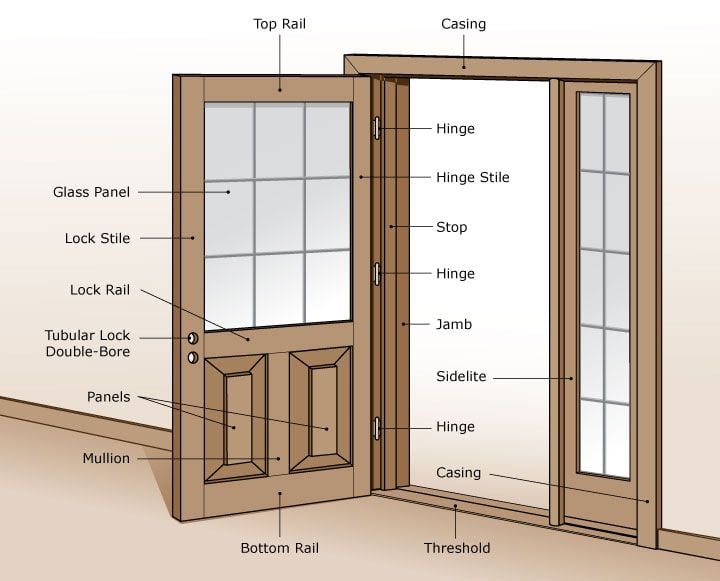
The hinges are a relationship (R) between the door and doorframe, they are also also a distinction (D). We call this relationship a relationship-distinction (RD or a combination of R and D). Note also that the hinge is not merely a distinct thing but a composite of things, or a system (S). The hinge, or rather hinges, form a relational system made up of several parts that form the whole hinge. These parts include the leafs, knuckles, pin, and screw holes. It is therefore said that both this real-physical relationship and the conceptual mental model that represents it are both RDS's (a relationship that's also a distinct thing which is also a system comprised of parts). Indeed, even the two leaves of the hinge share an RDS called a pin which is comprised of a head and shaft.
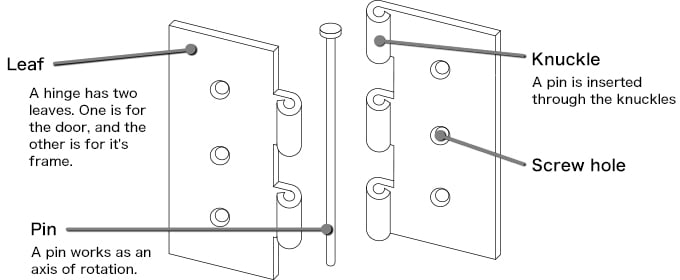
If we now zoom in a bit and look at how the leaf of a hinge relates to both a door and a frame, we see that a screw is used (or several screws). We see, too, that even a lowly screw is not only a distinct thing but also a system made up of lesser parts: head, neck, major diameter, minor diameter, thread, and tip. In this case, a screw is also an RDS.
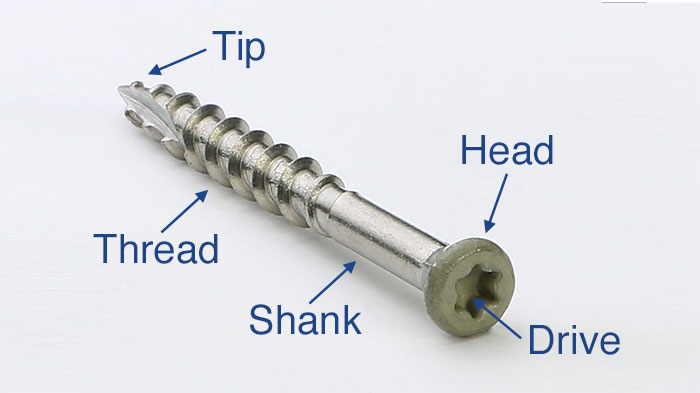
We can see these four RDSs (in red) in the conceptual map below:
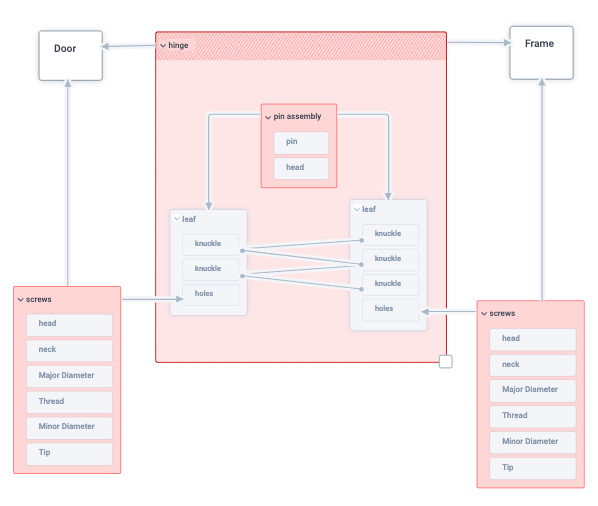
RDSs are predictably present in both the material world and in mental models—our representations of the material world. Relationships exist, from the micro scale of neurons to the larger scale of hinges to the relationship between countries. An embassy is a building that houses an ambassadorial mission which is a large and complex system that includes: an ambassador, emissaries, staff, policies, offices, desks, computers and various sundry resources. The entire complex system is the RDS between two countries.

In out final example let's look at the coffee supply chain. We see that there is a relationship between coffee growers and coffee consumers. Yet, there are many actors, systems, and subsystems that exist as links in the chain between growers and consumers. Here again, the supply chain is a complex RDS.
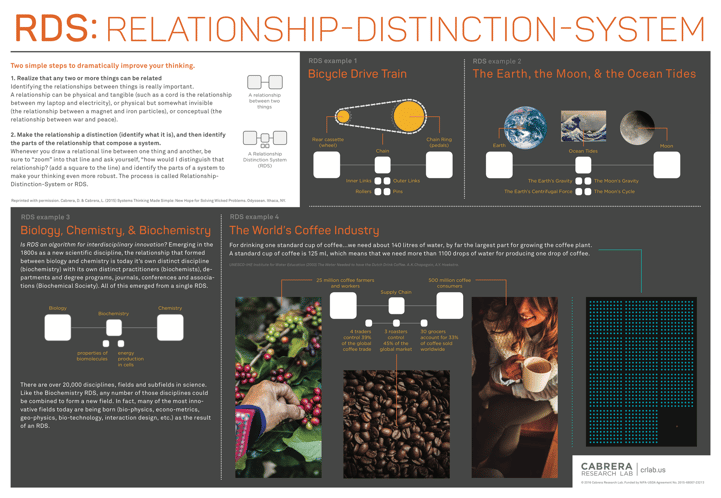
Now let's take a look at how RDS structure can be used as a structural prediction. Let's say we start with any number of things - either conceptual representations or material (the identity of a Distinction). Whatever number (n) of things we have the relationships between these things can be predicted using the formula n(n-1)/2. For example, if you have 5 things, you would have 5(5-1)/2 relationships, or 10 relationships.
In other words, we can predict for n items the number of RDSs that will exist. This is just one example of the predictive power of DSRP in mental and material systems. There are many more. DSRP elucidates structures that are likely there and causes you look to deeper to see them. Seeing the structure of mental models helps identify gaps in existing knowledge, and therefore predict areas to explore, expand analyses, and create new knowledge.
- Read more about how RDSs can be used to lessen silos and silofication.
.png?width=150&height=150&name=CRL%20GOAT%20Logo%20(4).png)

